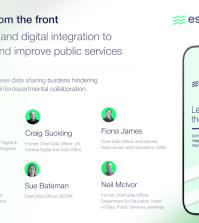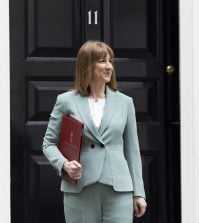Female public servants in New Zealand ‘working for free’ until July, due to pay gap

Women in New Zealand’s public service have this week started to work effectively for free until the end of June due to the 14% wage gap, the country’s public sector union has claimed.
Erin Polaczuk, national secretary of the Public Service Association – New Zealand’s largest union representing nearly 62,000 workers in central government, state-owned enterprises, local councils, health boards and community groups, called for action to address the pay gap.
Addressing an event hosted by politicians in New Zealand’s parliament on Tuesday, which marked ‘Working For Free Day’, she said: “The public service is 70 per cent female, which means every day women are making this country a great place to live for all New Zealanders.
“But the average woman in the public sector takes home 14 per cent less than the average man – which means less to spend on her family, to save for retirement or put back into the economy”.
Presenting a specially iced cake which highlighted the size of the 14% slice, Polaczuk added: “The Public Service Association has been campaigning for equal pay for 102 years.
“Let’s make sure today’s not just about cake – we need action.”

Labour MP Sue Moroney, who hosted the event, with MPs from Labour, New Zealand First, the Maori Party and the Greens also attending, told the audience there was “no excuse” for not tackling the equal pay issue.
An annual breakdown of gender pay gaps across New Zealand’s government agencies going back to 2008 was released earlier this year.
It showed that the overall gender pay gap in the public service had dropped one percentage point in seven years, from 15% to 14%. However, adjusted for age, seniority and experience, the pay gap dropped to 5.3%.
The report also showed that some organisations had made headway in reducing pay inequality: The Treasury reduced its gap from 32% to 18%, while the Department of Prime Minister and Cabinet dropped from a 28% gap in 2008 to 7% in 2015.
Government chief talent officer Andrew Hampton said at the time that improving diversity in the public sector was an “important focus” for the State Services Commission, but would take time.
Hampton, who has since moved on to lead the Government Communications Security Bureau, said the public sector currently had the highest ever proportion of female chief executives, at 40%, while the proportion of women in senior leadership roles had increased from 39.6% in 2011 to 44.2% in 2015.
For up to date government news and international best practice follow us on Twitter @globegov
See also:
Research tracks gender equality among G20 officials
Australia’s top civil servant calls for ideas to increase gender diversity
Report: Gender Equality among Civil Service Leaders
Report shows gender pay gap up among New Zealand’s senior government leaders
Andrew Hampton, chief talent officer, New Zealand government: exclusive interview





















